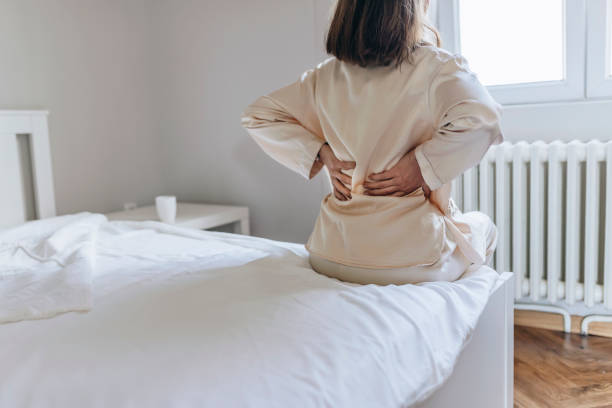Lower back pain is a common enemy for many women, disrupting daily activities and causing a fair amount of discomfort. But unlike a foe you can confront head-on, lower back pain in females often feels like a mysterious ache with various potential causes. The good news is, understanding these causes is the first step to finding relief.
General Culprits: Like Everyone Else Gets
Just like anyone else, women can experience lower back pain due to common reasons that affect people of all genders. These include:
- Muscle strains or ligament sprains: This is a frequent culprit, often caused by improper lifting techniques, repetitive motions, or even bad posture.
- Injury: A fall, accident, or sports injury can damage muscles, ligaments, or discs in the spine, leading to pain.
- Disc problems: Discs are the cushions between your vertebrae. A herniated disc (where the soft inner core bulges) or degenerated disc (where the disc loses its height and cushioning) can press on nerves and cause pain.
- Arthritis: Osteoarthritis, the wear-and-tear arthritis, can affect the facet joints in the spine, causing stiffness and pain.
Beyond the Basics: Female-Specific Causes
Women have some unique factors that can contribute to lower back pain:
- Hormonal fluctuations: The hormonal shifts during menstruation (PMS and cramps) can cause pain that radiates to the lower back.
- Endometriosis: This condition, where uterine lining tissue grows outside the uterus, can irritate nerves in the lower back and pelvis, causing pain.
- Pelvic inflammatory disease (PID): This infection of the reproductive organs can also lead to lower back pain.
- Fibroids: These are non-cancerous growths in the uterus that can sometimes cause back pain.
- Pregnancy: As the baby grows, the weight puts strain on the back muscles and ligaments, leading to backaches.
Anatomical Differences: A Woman’s Body
There are some anatomical differences between men and women that can play a role in lower back pain:
- Wider pelvis: A wider pelvis can shift the center of gravity forward, stressing the lower back muscles.
- Pregnancy adaptations: Relaxin, a hormone released during pregnancy, loosens ligaments in preparation for childbirth, but it can also contribute to back instability.
- Weaker core muscles: Studies suggest that, on average, women have weaker core muscles compared to men. A strong core helps support the spine, so weakness can increase susceptibility to back pain.
When to See a Doctor
While many cases of lower back pain improve with home remedies like rest, heat/ice therapy, and pain relievers, there are situations where you should seek professional help:
- The pain is severe or doesn’t improve with home care after a few weeks.
- You have numbness, tingling, or weakness in the legs.
- You experience difficulty controlling your bowels or bladder.
- You have a fever along with the back pain.
It’s important to get a proper diagnosis to determine the cause of your pain and get the most appropriate treatment.
Taking Charge of Your Back Health
Here are some tips to keep your lower back healthy:
- Maintain good posture: Stand tall with shoulders back and relaxed, core engaged.
- Lift properly: Bend your knees and keep your back straight when lifting objects.
- Exercise regularly: Regular exercise strengthens core muscles and improves overall flexibility.
- Maintain a healthy weight: Excess weight puts extra strain on your back.
- Manage stress: Stress can worsen pain perception, so find healthy ways to manage it.
By understanding the potential causes of lower back pain specific to women and taking proactive steps to strengthen your back and core, you can minimize discomfort and keep your back feeling its best. Remember, if the pain persists or worsens, don’t hesitate to consult a doctor to get a diagnosis and personalized treatment plan.

